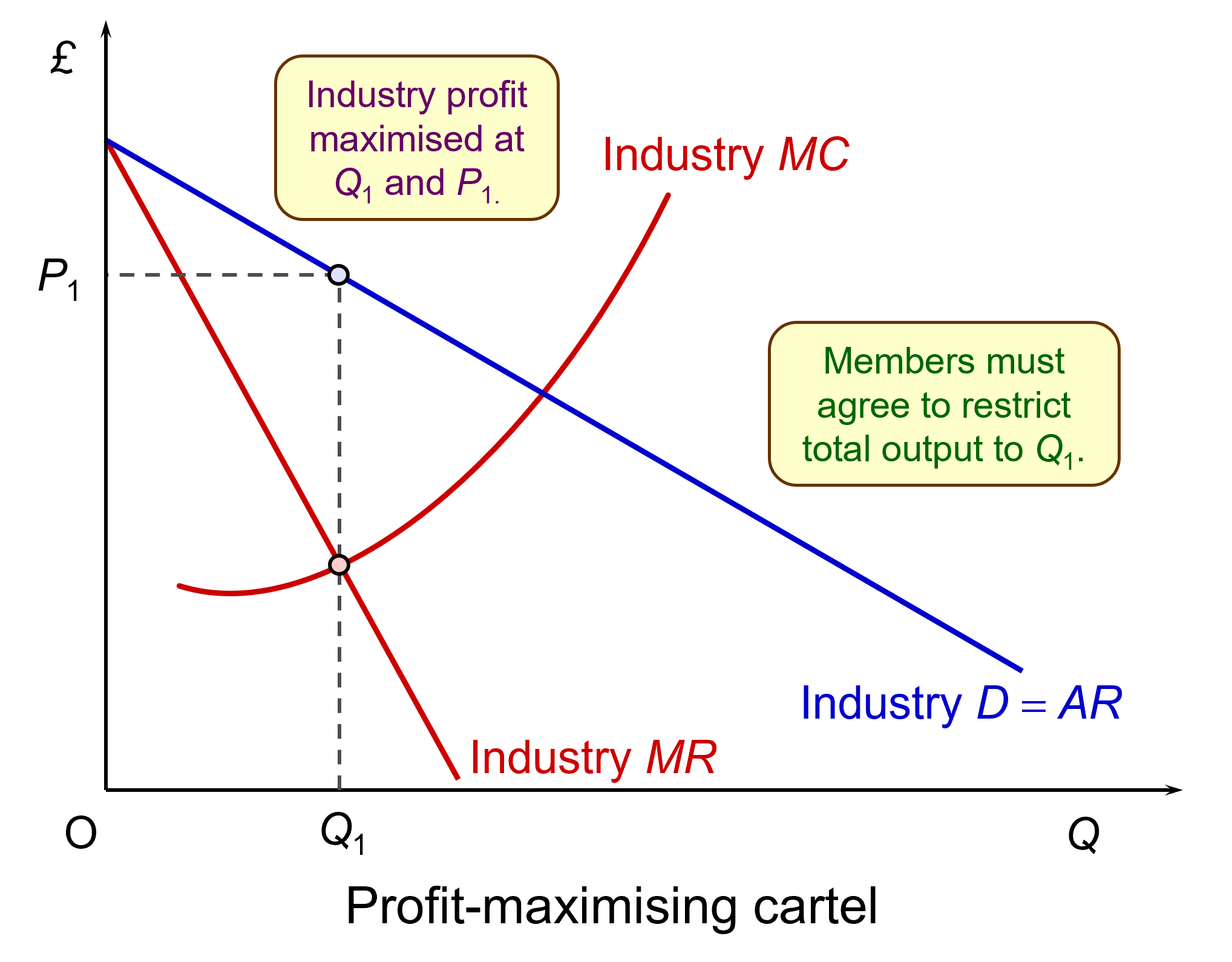 Price fixing agreements between firms are one of the most serious breaches of competition law. Therefore, if detected, the firms involved face substantial fines (see here for an example), plus there is also the potential for jail sentences and director disqualification for participants. However, due to their secretive nature and the need for hard evidence of communication between firms, it is difficult for competition authorities to detect cartel activity.
Price fixing agreements between firms are one of the most serious breaches of competition law. Therefore, if detected, the firms involved face substantial fines (see here for an example), plus there is also the potential for jail sentences and director disqualification for participants. However, due to their secretive nature and the need for hard evidence of communication between firms, it is difficult for competition authorities to detect cartel activity.
In order to assist detection, competition authorities offer leniency programmes that guarantee full immunity from fines to the first participant to come forward and blow the whistle on the cartel. This has become a key way in which competition authorities detect cartels. Recently, competition authorities have introduced a number of new tools to try to enhance cartel detection.
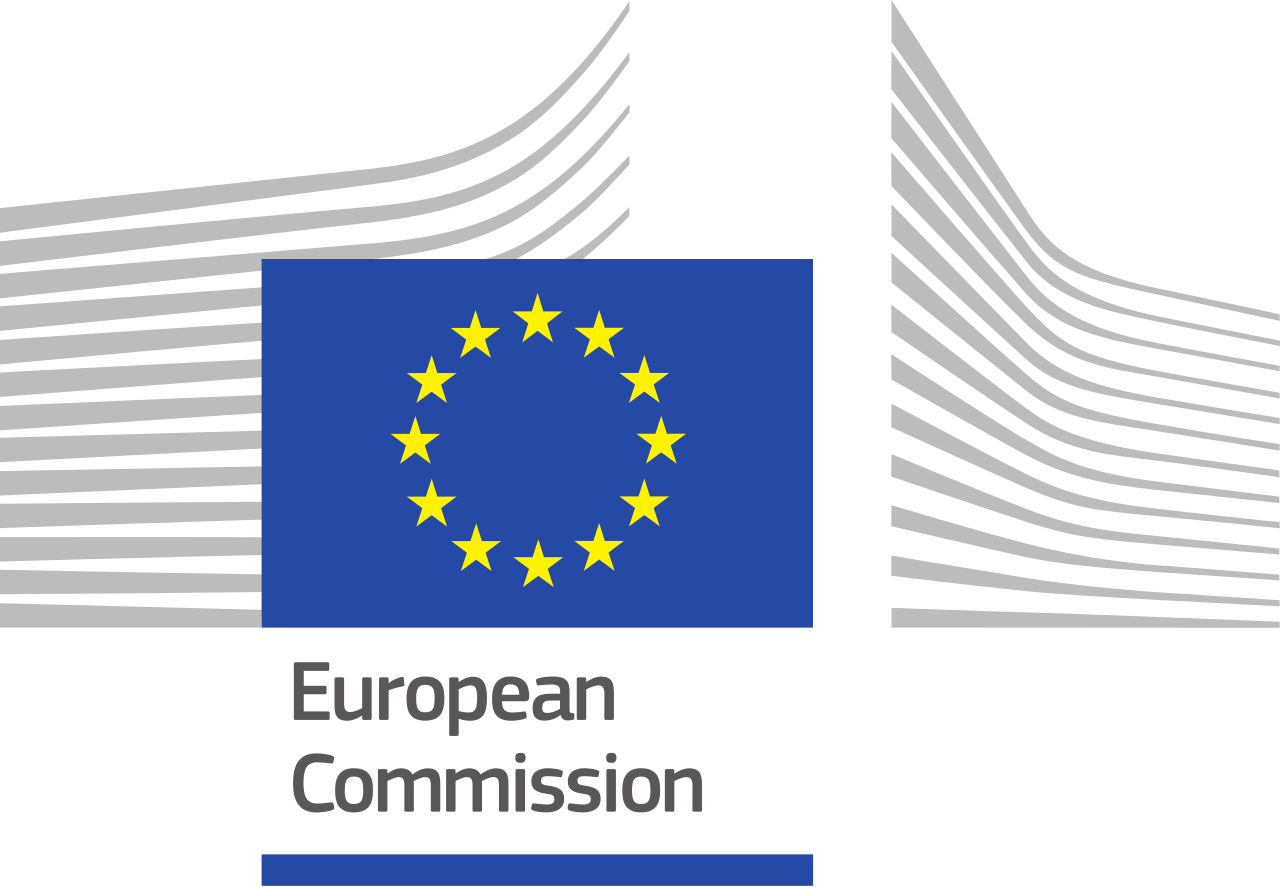 First, the European Commission launched an online tool to make it easier for cartels to be reported to them. This tool allows anonymous two-way communication in the form of text messages between a whistle blower and the Commission. The Commissioner in charge of competition policy, Margrethe Vestager, stated that:
First, the European Commission launched an online tool to make it easier for cartels to be reported to them. This tool allows anonymous two-way communication in the form of text messages between a whistle blower and the Commission. The Commissioner in charge of competition policy, Margrethe Vestager, stated that:
If people are concerned by business practices that they think are wrong, they can help put things right. Inside knowledge can be a powerful tool to help the Commission uncover cartels and other anti-competitive practices. With our new tool it is possible to provide information, while maintaining anonymity. Information can contribute to the success of our investigations quickly and more efficiently to the benefit of consumers and the EU’s economy as a whole.
 Second, the UK Competition and Markets Authority (CMA) has launched an online and social media campaign to raise awareness of what is illegal under competition law and to encourage illegal activity to be reported to them. The CMA stated that:
Second, the UK Competition and Markets Authority (CMA) has launched an online and social media campaign to raise awareness of what is illegal under competition law and to encourage illegal activity to be reported to them. The CMA stated that:
Cartels are both harmful and illegal, and the consequences of breaking the law are extremely serious. That is why we are launching this campaign – to help people understand what cartel activity looks like and how to report it so we can take action.
This campaign is on the back of the CMA’s own research which found that less that 25% of the businesses they surveyed believed that they knew competition law well. Furthermore, the CMA is now offering a reward of up to £100,000 and guaranteed anonymity to individuals who provide them with information.
It will be fascinating to see the extent to which these new tools are used and whether they aid the competition authorities in detecting and prosecuting cartel behaviour.
Articles
Questions
- Why do you think leniency programmes are a key way in which competition authorities detect cartels?
- Who do you think is most likely to blow the whistle on a cartel (see the article above by A.Stephan)?
- Why is it worrying that so few businesses appear to know competition law well?
- Which of the two tools do you think is most likely to enhance cartel detection? Explain why.
 In the blog OPEC deal pushes up oil prices John discussed the agreement made by OPEC members to reduce total oil output from the start of 2017, with Saudi Arabia making the biggest cut in output. The amount of oil being provided is a key determinant of the oil price and this agreement to reduce oil output contributed to rising prices. However, now oil prices have begun to fall (see chart below) with Saudi Arabia in particular recording an increase in output but all OPEC nations noting that global crude stocks had risen.
In the blog OPEC deal pushes up oil prices John discussed the agreement made by OPEC members to reduce total oil output from the start of 2017, with Saudi Arabia making the biggest cut in output. The amount of oil being provided is a key determinant of the oil price and this agreement to reduce oil output contributed to rising prices. However, now oil prices have begun to fall (see chart below) with Saudi Arabia in particular recording an increase in output but all OPEC nations noting that global crude stocks had risen.
Supply and demand are key here and over the past few years, it has been a problem of excess supply that has led to low prices. OPEC nations have been aiming to achieve greater stability in global oil markets. Given the excess supply, it has been output of oil that the cartel member have been trying to cut. That was the point of the agreement that came into effect from the start of 2017. However, even with the recent increase in production Saudi Arabia notes that its output is still in line with its output target. The 10 percent fall in crude prices over such a short period of time has led to renewed concerns that pledges to reduce production will not be met. However Saudi Arabia’s energy ministry stated:
“Saudi Arabia assures the market that it is committed and determined to stabilising the global oil market by working closely with all other participating Opec and non-Opec producers.”
There were already concerns about the oil market relating to a potential increase in US shale oil output. Oil producers include OPEC and non-OPEC members and so while the cartel has agreed to cut production, it has little control over production from non-cartel members.  This was one of the main factors that contributed to the oil price lows that we previously saw. OPEC’s forecast for oil production from non-OPEC member has been raised for 2017 and overall production from all oil producing nations looks set to increase for the year, despite OPEC curbing output by 1.2 million barrels per day. However, despite the 10% drop, the price of crude oil ($50) still remains well above its low of $28 in January 2016.
This was one of the main factors that contributed to the oil price lows that we previously saw. OPEC’s forecast for oil production from non-OPEC member has been raised for 2017 and overall production from all oil producing nations looks set to increase for the year, despite OPEC curbing output by 1.2 million barrels per day. However, despite the 10% drop, the price of crude oil ($50) still remains well above its low of $28 in January 2016.
Oil prices are one of the key factors that affect inflation and with UK inflation expected to rise, this fall in oil prices may provide a small and temporary pause in the rise in the rate of inflation. There are many inter-related factors that affect oil prices and it really is a supply and demand market. If US shale oil production continues to rise, then total oil output will rise too and this will push down prices. If OPEC members undertake further production curbs, then this will push supply back down. Then we have demand to consider! Watch this space.
Report
OPEC Monthly Oil Market Report OPEC (14/3/17)
Articles
Saudis stand by commitment to oil production cuts Financial Times, Anjli Raval and David Sheppard (15/3/17)
Oil prices fall after Opec stocks rise BBC News (14/3/17)
Crude oil price slumps to new three-month low after OPEC supply warning Independent, Alex Lawler (14/3/17)
Opinion: Saudi Arabis has a big motivating interest in keeping oil prices high MarketWatch, Thomas H Kee Jr. (14/3/17)
Why oil prices may come under even more pressure next month Investor’s Business Daily, Gillian Rich (13/3/17)
Oil price crashes back towards $50 as Opec raises US oil forecasts The Telegraph, Jillian Ambrose (14/3/17)
Data and Information
Brent Crude Prices Daily US Energy Information Administration
OPEC Homepage Organisation of the Petroleum Exporting Countries
Questions
- What are the demand and supply-side factors that affect oil prices? Do you think demand and supply are relatively elastic or inelastic? Explain your answer.
- Use a demand and supply diagram to illustrate how OPEC production curbs will affect oil prices.
- If we now take into account US shale production rising, how will this affect oil prices?
- Why have OPEC members agreed to curb oil production? Is it a rational decision?
- What are the key points from the oil market report?
- How do oil prices affect a country’s rate of inflation?
- What, do you think, are oil prices likely to be at the end of the year? What about in ten years? Explain your answer.
- Should the USA continue to invest in new shale oil production?
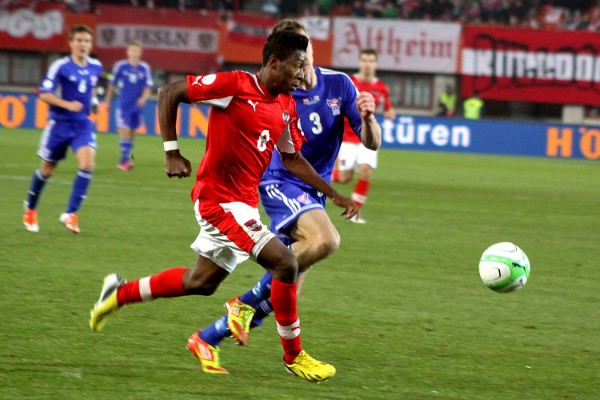 Earlier this week FIFA, the world governing body of football, announced plans to expand the World Cup from 32 to 48 teams starting in 2026. It is fair to say that this has been met with mixed reactions, in part due to the politics and money involved. However, for an economist one particularly interesting question is how the change will affect the incentives of the teams taking part in the competition.
Earlier this week FIFA, the world governing body of football, announced plans to expand the World Cup from 32 to 48 teams starting in 2026. It is fair to say that this has been met with mixed reactions, in part due to the politics and money involved. However, for an economist one particularly interesting question is how the change will affect the incentives of the teams taking part in the competition.
As a result of the change in the first stage of the competition, teams will be play the two other teams in their group. The best two teams in the group will then progress to the next round with the worst team going home. This is in contrast to the current format where the best two teams from a group of four go through to the next round.
Currently, in the final round of group matches all four of the teams in the group play simultaneously. However, an immediate implication of the new format is that this will no longer be the case. Instead, one of the teams will have finished their group matches before the other two teams play each other. This could have important implications for the incentives of the teams involved. To see this we can recall a very famous match played under similar circumstances between West Germany and Austria at the 1982 World Cup.
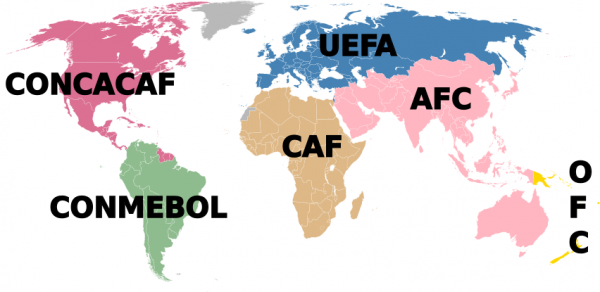 The results of the earlier group games meant that if West Germany beat Austria by one or two goals to nil both teams would progress to the next round. Any other result would mean that Algeria progressed at the expense of one of these two teams. The way in which the match played out was that West Germany scored early on and much of the rest of the game descended into farce. Both teams refused to attack or tackle their opponents, as they had no incentive to so (see here for some clips of the action, or lack of!).
The results of the earlier group games meant that if West Germany beat Austria by one or two goals to nil both teams would progress to the next round. Any other result would mean that Algeria progressed at the expense of one of these two teams. The way in which the match played out was that West Germany scored early on and much of the rest of the game descended into farce. Both teams refused to attack or tackle their opponents, as they had no incentive to so (see here for some clips of the action, or lack of!).
There is no evidence to suggest that West Germany and Austria had come to a formal agreement to do this. Instead, the two teams appear to have simply had a mutual understanding that refraining from competing would be beneficial for both of them.
This is exactly what economists refer to as tacit collusion – a mutual understanding that refraining from competition and keeping prices high benefits all firms in the market. Much like the fans who had to sit through the farce of a game (you can hear the frustration of the crowd in the video clip linked to above), the end result is harm to consumers who have to pay the higher prices or go without the product.
For this reason governments use competition policy to try to stop situations arising in markets that make the possibility of tacit collusion more likely. One way in which this is done is by preventing mergers in markets where tacit collusion appears possible and would be facilitated by the reduction in the number of firms as a result of the merger. The equivalent for the World Cup would be preventing a change in the format of the competition.
An alternative approach is to tinker with the rules of the game in order to make collusion harder. FIFA seems to have some awareness of the possibility of doing this as it is suggesting that it may require all tied games to extra-time and then a penalty shoot-out in order to determine a winner. Clearly, this would go at least some way to alleviating concerns about tacit collusion in the final group matches because coordinating on a draw would no longer be possible. In a similar fashion, competition authorities can also intervene in markets to change the rules of the game (see for example the recent intervention in the UK cement industry).
Therefore, more generally, the World Cup example highlights the fact that variations in the structure of markets and the rules of the game can have significant effects on firms’ incentives and this can have important consequences for market outcomes. It will certainly be fascinating to see what rules are imposed for the 2026 World Cup and how the teams taking part respond.
Articles
World Cup: Fifa to expand competition to 48 teams after vote BBC News (10/1/17)
How will a 48-team World Cup work? Fifa’s plan for 2026 explained The Guardian, Paul MacInnes (10/1/17)
The Disgrace of Gijón and the 48-team FIFA World Cup Mike or the Don (12/1/17)
Questions
- What is the difference between tacit collusion and a cartel?
- Why does a reduction in the number of firms in a market make collusion easier?
- What other factors make collusion more likely?
- How does competition policy try to prevent the different forms of collusion?
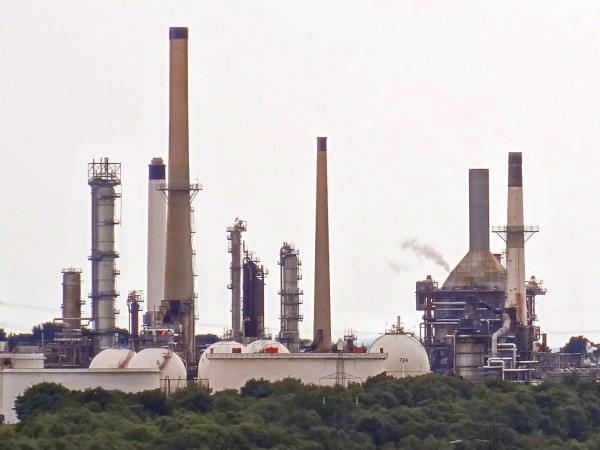 OPEC members agreed on 30 November 2016 to reduce their total oil output by 1.2m barrels per day (b/d) from January 2017 – the first OPEC cut since 2008. The biggest cut (0.49m b/d) is to be made by Saudi Arabia.
OPEC members agreed on 30 November 2016 to reduce their total oil output by 1.2m barrels per day (b/d) from January 2017 – the first OPEC cut since 2008. The biggest cut (0.49m b/d) is to be made by Saudi Arabia.
Russia has indicated that it too might cut output – by 0.3m b/d. If it carries through with this, it will be the first deal for 15 years to include Russia. OPEC members hope that non-OPEC countries will also cut output by 0.3m b/d. There will be a meeting between OPEC and non-OPEC members on 9 December in Doha to hammer out a deal. If all this goes ahead, the total cut would represent nearly 2% of world output.
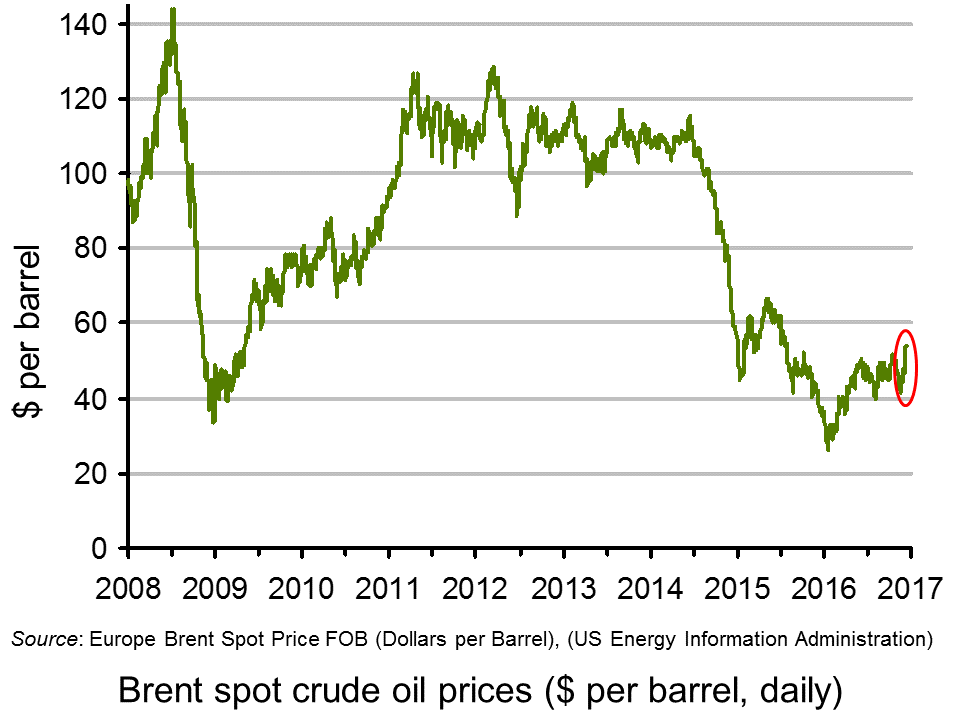 The OPEC agreement took many commentators by surprise, who had expected that Iran’s unwillingness to cut its output would prevent any deal being reached. As it turned out, Iran agreed to freeze its output at current levels.
The OPEC agreement took many commentators by surprise, who had expected that Iran’s unwillingness to cut its output would prevent any deal being reached. As it turned out, Iran agreed to freeze its output at current levels.
Although some doubted that the overall deal would stick, there was general confidence that it would do so. Markets responded with a huge surge in oil prices. The price of Brent crude rose from $46.48 per barrel on 29 November to $54.25 on 2 December, a rise of nearly 17% (click here for a PowerPoint of the chart)..
 The deal represented a U-turn by Saudi Arabia, which had previously pursued the policy of not cutting output, so as to keep oil prices down and drive many shale oil producers out of business (see the blog, Will there be an oil price rebound?)
The deal represented a U-turn by Saudi Arabia, which had previously pursued the policy of not cutting output, so as to keep oil prices down and drive many shale oil producers out of business (see the blog, Will there be an oil price rebound?)
But if oil prices persist above $54 for some time, many shale oil fields in the USA will become profitable again and some offshore oil fields too. At prices above $50, the supply of oil becomes relatively elastic, preventing prices from rising significantly. As The Observer article states:
It is more likely that a $60 cap will emerge as the Americans, who stand outside the 13-member OPEC grouping, unplug the spigots that have kept their shale oil fields from producing in the last year or two.
… The return to action of once-idle derricks on the Texas and Dakota plains is the result of efficiency savings that have seen large jobs losses and a more streamlined approach to drilling from the US industry, after the post-2014 price tumble rendered many operators unprofitable. Only a few years ago, many firms struggled to make a profit at $70 a barrel. Now they can be competitive at much lower prices, with many expecting $50 for West Texas Intermediate – a lighter crude that typically earns $5 a barrel less than Brent.
OPEC as a cartel is much weaker than it used to be. It produces only around 40% of global oil output. Cheating from its members and increased production from non-OPEC countries, let alone huge oil stocks after two years when production has massively exceeded consumption, are likely to combine to keep prices below $60 for the foreseeable future.
Webcasts
 OPEC Cuts Daily Production by 1.2 Million Barrels MarketWatch, Sarah Kent (30/11/16)
OPEC Cuts Daily Production by 1.2 Million Barrels MarketWatch, Sarah Kent (30/11/16)
 How Putin, Khamenei and Saudi prince got OPEC deal done Reuters, Rania El Gamal, Parisa Hafezi and Dmitry Zhdannikov (2/12/16)
How Putin, Khamenei and Saudi prince got OPEC deal done Reuters, Rania El Gamal, Parisa Hafezi and Dmitry Zhdannikov (2/12/16)
 Fuel price fears as OPEC agrees to cut supply Sky News, Colin Smith (30/11/16)
Fuel price fears as OPEC agrees to cut supply Sky News, Colin Smith (30/11/16)
 OPEC Confounds Skeptics, Agrees to First Oil Cuts in 8 Years Bloomberg, Jamie Webster (30/11/16)
OPEC Confounds Skeptics, Agrees to First Oil Cuts in 8 Years Bloomberg, Jamie Webster (30/11/16)
 Game of oil: Behind the OPEC deal Aljazeera, Giacomo Luciani (3/12/16) (first 10½ minutes)
Game of oil: Behind the OPEC deal Aljazeera, Giacomo Luciani (3/12/16) (first 10½ minutes)
 Russia won’t stick with its side of the OPEC cut bargain CNBC, Silvia Amaro (1/12/16)
Russia won’t stick with its side of the OPEC cut bargain CNBC, Silvia Amaro (1/12/16)
Articles
Oil soars, Brent hits 16-month high after OPEC output deal Reuters, Devika Krishna Kumar (1/12/16)
OPEC reaches a deal to cut production The Economist (3/12/16)
Opec doesn’t hold all the cards, even after its oil price agreement The Observer, Phillip Inman (4/12/16)
Saudi Arabia discussed oil output cut with traders ahead of Opec Financial Times, David Sheppard and Anjli Raval (4/12/16)
The return of OPEC Reuters, Jason Bordoff (2/12/16)
‘Unfortunately, We Tend To Cheat,’ Ex-Saudi Oil Chief Says Of OPEC Forbes, Tim Daiss (4/12/16)
After OPEC – What’s Next For Oil Prices? OilPrice.com (2/12/16)
The OPEC Oil Deal Sells Fake News for Real Money Bloomberg, Leonid Bershidsky (1/12/16)
Data and information
Brent crude prices, daily US Energy Information Administration
OPEC home page Organization of the Petroleum Exporting Countries
OPEC 171st Meeting concludes OPEC Press Release (30/11/16)
Questions
- What determines the price elasticity of supply of oil at different prices?
- Why is the long-term demand for oil more elastic than the short-term demand?
- What determines the likelihood that the OPEC agreement will be honoured by its members?
- Is it in Russia’s interests to cut its production as part of the agreement?
- Are higher oil prices ‘good news’ for the global economy and a boost to economic growth – a claim made by Saudi Arabia?
- What role does oil storage play in determining the effect on the oil price of a cut in output?
- What are oil prices likely to be in five years’ time? Explain your reasoning.
- Is it in US producers’ interests to invest in new shale oil production? Explain.
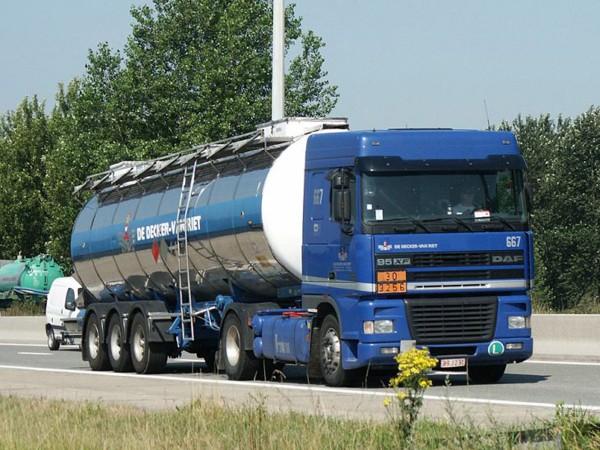 Record fines have been imposed by the European Commission for the operation of a cartel. Truck makers, Volvo/Renault, Daimler, Iveco and DAF have been fined a total of €2.93bn. The fines were considerably higher than the previous record fine of €1.7bn on banks for rigging the LIBOR rate.
Record fines have been imposed by the European Commission for the operation of a cartel. Truck makers, Volvo/Renault, Daimler, Iveco and DAF have been fined a total of €2.93bn. The fines were considerably higher than the previous record fine of €1.7bn on banks for rigging the LIBOR rate.
Along with MAN, they were found to have colluded for 14 years over pricing. They also colluded in passing on to customers the costs of compliance with stricter emissions rules. Together these five manufacturers account for some 90% of medium and heavy lorries produced in Europe.
The companies have admitted their involvement in the cartel. If they had not, the fines might have been higher. MAN escaped a fine of €1.2bn as it had revealed the existence of the cartel to the Commission.
A sixth company, Scania, is still in dispute with the Commission over its involvement. Thus the final total of fines could be higher when Scania’s case is settled.
In addition, any person or firm adversely affected by the cartel can seek damages from any of the companies in the national courts of member states. They do not have to prove that there was a cartel.
The Commission hopes that the size of the fine will act as a disincentive for other firms to form a cartel. ‘We have, today, put down a marker by imposing record fines for a serious infringement,’ said Margrethe Vestager, the EU’s competition commissioner.
Also, by being able to exempt a cartel member (MAN in this case) from a fine if it ‘blows the whistle’ to the authorities, it will help to break existing cartels.
There are some other major possible cartels and cases of abuse of market power currently being considered by the Commission. These include Google and whether unfair tax breaks were given to Apple and Amazon by Ireland and Luxembourg respectively.
Articles
Price-Fixing Truck Makers Get Record E.U. Fine: $3.2 Billion New York Times, James Kanter (19/7/16)
 Truckmakers Get Record $3.23 Billion EU Fine for Cartel Bloomberg, Aoife White (19/6/16)
Truckmakers Get Record $3.23 Billion EU Fine for Cartel Bloomberg, Aoife White (19/6/16)
EU fines truckmakers a record €2.93bn for running 14-year cartel Financial Times, Peter Campbell, Duncan Robinson and Alex Barker (19/7/16)
Truckmakers fined by Brussels for price collusion The Guardian, Sean Farrell (19/7/16)
Europa Press Release
Antitrust: Commission fines truck producers € 2.93 billion for participating in a cartel European Commission (19/7/16)
Information
Competition DG European Commission
Questions
- How have the various stakeholders in the truck manufacturing industry been affected by the operation of the cartel?
- What incentive effects are there, (a) for existing cartel members and (b) for firms thinking of forming a cartel, in the fining system used by the European Commission?
- Unlike the USA, the EU cannot jail managers for oligopolistic collusion. Compare the relative effectiveness of large fines and jail sentences in deterring cartels.
- What determines the profit-maximising price(s) for a cartel?
- Apart from the threat of action by the competition authorities, what determines the likely success of a cartel in being able to fix prices?
- Choose two other cases of possible cartels or the abuse of market power being examined by the European Commission. What is the nature of the suspected abuse?
 Price fixing agreements between firms are one of the most serious breaches of competition law. Therefore, if detected, the firms involved face substantial fines (see here for an example), plus there is also the potential for jail sentences and director disqualification for participants. However, due to their secretive nature and the need for hard evidence of communication between firms, it is difficult for competition authorities to detect cartel activity.
Price fixing agreements between firms are one of the most serious breaches of competition law. Therefore, if detected, the firms involved face substantial fines (see here for an example), plus there is also the potential for jail sentences and director disqualification for participants. However, due to their secretive nature and the need for hard evidence of communication between firms, it is difficult for competition authorities to detect cartel activity. First, the European Commission launched an online tool to make it easier for cartels to be reported to them. This tool allows anonymous two-way communication in the form of text messages between a whistle blower and the Commission. The Commissioner in charge of competition policy, Margrethe Vestager, stated that:
First, the European Commission launched an online tool to make it easier for cartels to be reported to them. This tool allows anonymous two-way communication in the form of text messages between a whistle blower and the Commission. The Commissioner in charge of competition policy, Margrethe Vestager, stated that:  Second, the UK Competition and Markets Authority (CMA) has launched an online and social media campaign to raise awareness of what is illegal under competition law and to encourage illegal activity to be reported to them. The CMA stated that:
Second, the UK Competition and Markets Authority (CMA) has launched an online and social media campaign to raise awareness of what is illegal under competition law and to encourage illegal activity to be reported to them. The CMA stated that: 






